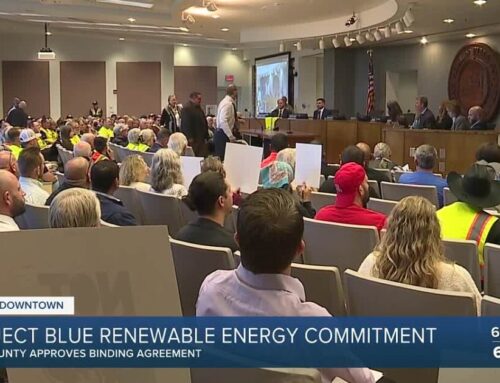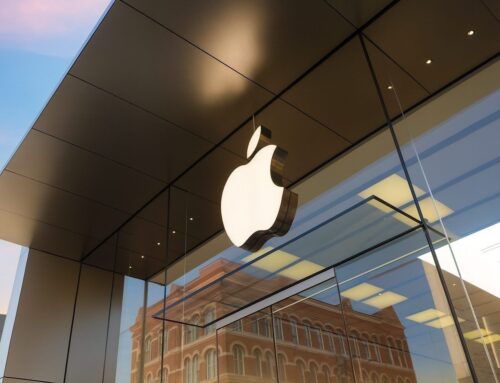The secret AI sauce behind Meta stock’s 683% rise since the dark days of 2022
June 18, 2025
Picture scrolling through Facebook or Instagram and spotting an advertisement that feels tailor-made for you. You’re seeing Meta Platform ‘s artificial intelligence tools in action, crafting ads for its partner businesses that specifically target and attract customers based on their interests. It has also become the secret sauce behind Meta’s wildly success ad unit driving its stellar financial performance and stock performance. But few could see Meta’s path to AI dominance just a few years ago. In 2022, the social media giant hit a low as investors balked at CEO Mark Zuckerberg’s costly metaverse project and Apple’s privacy changes disrupted its ad business. Meta shares fell by more than 60% in 2022, at one point closing as low as $88.91 a share. Then came Zuckerberg’s “Year of Efficiency” in 2023 aimed at reversing the tide with layoffs and a focus on profitability. Meta quickly rewarded its loyal investors with a nearly 200% stock jump that year, as its AI-enhanced ads revived revenue growth and the company’s cost cuts jumpstarted earnings. And despite lingering concerns over the company investing too much and too quickly in the nascent technology, it was hard to argue with the results. Meta delivered revenue and earnings beats for all four quarters of fiscal 2024. Jump to 2025 and Meta has fully repositioned itself as an AI-first company, one of the most celebrated in the field. The company’s open-source Llama large language models are the cornerstone of its strategy, competing against the likes of OpenAI’s GPT-4 and Google’s Gemini. Zuckerberg’s investments in data centers and hardware aim to secure the company’s long-term edge. Building these large powerful AI models is critical to having “control of our own destiny” in powering the various AI opportunities Meta is focused on, Zuckerberg has said, emphasizing improved advertising and user experiences. As of Wednesday’s close, its stock is up roughly 683% since that November 2022 closing low. Meta’s AI strategy has not been without hurdles. The company delayed the release of Behemoth, its most advanced large language model, originally slated for April, until the fall or later due to performance issues. At the same time, Llama 4’s release didn’t generate much enthusiasm, fueling perceptions that Meta was falling behind in the AI race. The challenges compounded when 11 out of 14 AI researchers left the company amid intensified competition. The biggest risk to Meta’s stock is losing its lead on the cutting edge of AI, said Gil Luria, analyst at D.A. Davidson, who noted that the underwhelming Llama 4 opened the door to competitors, including OpenAI, Anthropic and some Chinese models. Indeed, Zuckerberg personally stepped in to recruit top talent to stay out front, including bringing back Robert Fergus, a former Google DeepMind researcher and previous Meta employee, to enhance the AI division. Earlier this month, Meta made another major move investing $14.8 billion for a 49% stake in data-labeling company Scale AI and hired its CEO to lead a new “superintelligence” research lab, joined by Scale AI staff. In a sign of its aggressiveness, Meta also offered employees at OpenAI bonuses of $100 million to leave the ChatGPT creator, OpenAI CEO Sam Altman said on a recent podcast . Key growth ingredient So what exactly has made Meta’s AI so special? The company’s newest Llama 4 is “multimodal,” which means it can process and learn from multiple types of data including text, images or backgrounds, similar to Google’s Gemini and OpenAI’s GPT-4 multimodal models. It powers Meta’s ad growth by enabling advertisers to create tailored ads quickly and cost-effectively, and boosts engagement and performance across Facebook and Instagram. “Performance improvements from being multimodal benefit all applications,” said Matt Steiner, Meta’s VP of monetization infrastructure, ranking & AI foundations, in a CNBC interview. “Models trained on different data sources like images or videos or text all benefit from being trained on the same model,” he added, noting this versatility drives better ad targeting and content creation. Steiner emphasized that this approach “helps us maintain our competitive edge in advertising by maximizing return on advertiser spend while controlling costs.” Meta trails only Google in digital advertising, capturing 23% of global ad revenue in 2024 compared to Google’s 28%, according to eMarketer. Meta’s ad revenue rose 22% last year, outpacing Google’s 12% and the industry’s 9%. This growth, driven by AI-powered targeting, underscores Meta’s momentum. “The ability to deliver better ads allows them to sell those ads for more, which is why they’re gaining share in the digital ad market,” said Luria, noting that Meta has been adept at using traditional machine learning techniques. He said Meta is taking this technology to an advanced level, “automating it further — allowing advertisers to generate content and make even more well-informed decisions.” This next wave, generative AI, “deepens Meta’s competitive moat.” He highlightdc an example of how Reels is becoming more compelling to users. That’s because Meta is “getting better at the AI algorithm that allows them to serve the next best short video to keep the consumer engaged.” The introduction of ads on WhatsApp, announced this week, also expands the reach of Meta’s AI ad tools, creating a new place where it can generate high-margin revenue. Meta on Tuesday announced new generative AI tools for its Advantage+ platform, enabling advertisers to integrate brand elements into personalized ads and create animated videos from images with music and text overlays. The company is also testing a new feature in “Video Highlights” which uses AI summaries to better digest video ads by skipping to the highlights of the video. Looking ahead, Meta’s generative AI advancements are enabling it to deliver a higher volume of personalized ads. The goal: To keep and strengthen its AI edge. As Meta’s Steiner put it, the company’s “compounding effects” of AI improvements fuel growth, which should help Meta make more gains in digital advertising. The company’s financial and strategic commitment show Zuckerberg and Co. are in a league of their own in digital ads as Meta continues to take market share. We’re confident in Meta’s ability to keep innovating on its advertising tools using AI, keeping customers around and its business growing. We currently have a 2 rating on the stock with a price target of $750. (Jim Cramer’s Charitable Trust is long META. See here for a full list of the stocks.) As a subscriber to the CNBC Investing Club with Jim Cramer, you will receive a trade alert before Jim makes a trade. Jim waits 45 minutes after sending a trade alert before buying or selling a stock in his charitable trust’s portfolio. If Jim has talked about a stock on CNBC TV, he waits 72 hours after issuing the trade alert before executing the trade. THE ABOVE INVESTING CLUB INFORMATION IS SUBJECT TO OUR TERMS AND CONDITIONS AND PRIVACY POLICY , TOGETHER WITH OUR DISCLAIMER . NO FIDUCIARY OBLIGATION OR DUTY EXISTS, OR IS CREATED, BY VIRTUE OF YOUR RECEIPT OF ANY INFORMATION PROVIDED IN CONNECTION WITH THE INVESTING CLUB. NO SPECIFIC OUTCOME OR PROFIT IS GUARANTEED.
Search
RECENT PRESS RELEASES
Related Post




